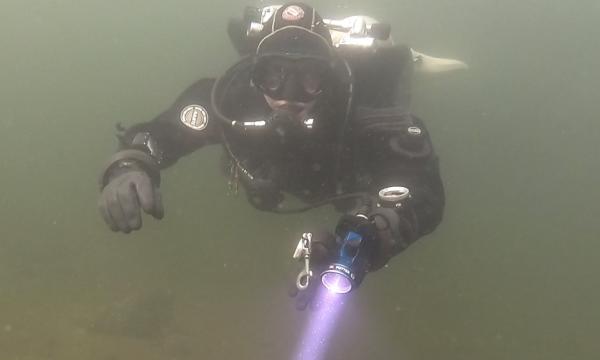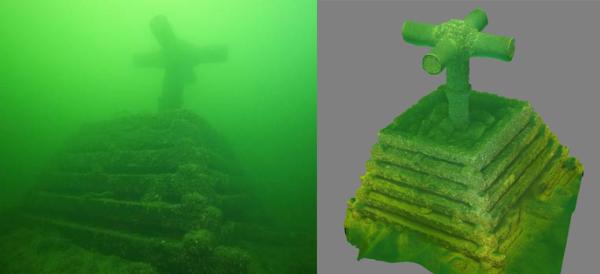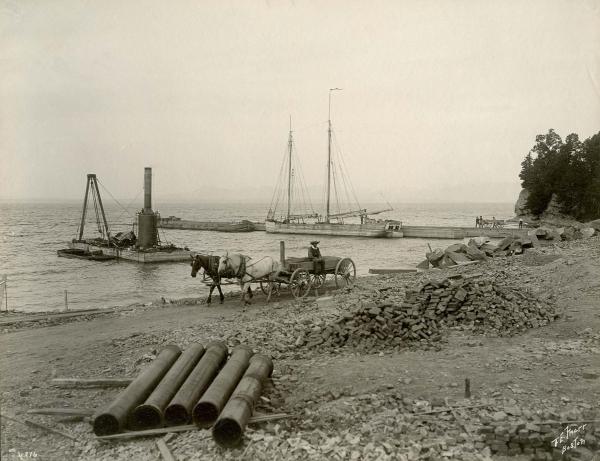Love the old Shelburne Farms history articles .. keep them coming ...
Diving in search of Farm history (and future)
Guest blogger, Dave Potter, is a local resident and diving enthusiast. This blog is adapted from his article that was originally published in the February 2020 issue of Quest: The Journal of Global Underwater Explorers, Vol. 21, No. 1. Used with permission. We thought you'd enjoy this trip underwater in the heat of the summer!
In getting ready for a dive off the coast of Lake Champlain a couple summers ago, I asked an acquaintance how deep local anglers run their fishing lines, and he asked me if I would be interested in helping Shelburne Farms locate an underwater water intake structure likely dating from the late 1800s. My local diving buddies and I all enjoy diving for many reasons--to practice skills, try out a new piece of equipment, or just to get in the water. But we all like to have a purpose. This was a unique one.
The Farm is considering using its old drinking water infrastructure to enhance its fire-suppression system. (The Farm’s Old Dairy Barn was destroyed by lightning in 2016). It needed divers to inspect the underwater structure to see if it was still usable.
Based on information from a diver in the early 1980s, Marshall Webb thought the pipe was located 300 feet offshore at about 20-30 feet deep. He also knew about where the pipe started near the shore. We didn’t think it would take more than one dive to locate the start of the pipe and follow it out to the intake. We were wrong.
DIVE 2: To explore the pipe below the silt, we brought a primary reel and two 3-foot long fiberglass poles to where the pipe disappeared. We installed the first pole, tied the reel to it, and started slowly probing the silt for the intake pipe while running the reel. We ran the entire line without locating the intake structure. Leaving the pole and reel, we headed back to shore.
DIVE 3: We scootered out to the first reel, tied in a new one, and continued probing for the water pipe. After about 200 more ft of line, the pipe emerged from the silt and we found the intake structure!
The structure, sitting on a fully intact wood and rock cribbing, was an amazing sight as it appeared out of the dark, flat, and featureless bottom of the lake, 47 feet below the surface. We informally inspected it and found the intake screens were in great shape with no visible zebra mussel infestation. We took some video, then returned to shore, cutting the reels free as we left, but leaving the line so that we could find the structure on future dives.
DIVE 5: We conducted one more dive to take rough measurements of the structure. It is about 16 feet high; roughly 12 ft x 12 ft at the base and 5 x 5 ft at the top, with a pipe 1 ft in diameter. We also know now that the water intake pipe is about 2,000 ft long from pumphouse to intake.
As for when and how the pipe and intake structure were installed, Shelburne Farms' Archives and old newspaper records helped reveal the story. An article from July 25, 1901 in the Chelsea Herald states, "J.G. Falcon, the diver, is at Shelburne Farms, to lay 2,000 feet of 12-inch pipe in the lake for the purpose of furnishing a supply for the farms." Later that same year, Shelburne Farms ledger entries record invoice payments to Falcon for "new intake" and "new intake pipe." Mystery solved.


